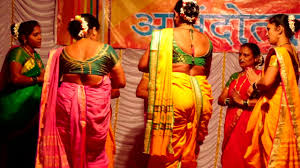Legend behind ShivaRathri




Festival of Mahashivaratri has remarkable significance in Hinduism. Worship of Lord Shiva on Shivratri day that falls on the 14th day of the dark fortnight in the month of Phalguna or Phalgun. Phalguna month pleases Lord Shiva the most and falls on Februray end March Ist week every year.
As per one of the legend, Shiva got married to Parvati on this auspicious day. Lord Shiva appeared in the form of a linga or ling in front of Brahma and Vishnu on this day. It is said that whoever prays to the Shivalinga on this day attains salvation.
Again, it is also said as per puranas, Parvati performed tapas or to say penance, prayed and meditated on this day to ward off any evil that might befall her husband on the moonless night. Since then, Maha shivaratri is believed to be an auspicious occasion for women to pray for the well-being of their husbands and sons. An unmarried woman prays for a husband like Shiva, who is considered to be the ideal husband. Another legend of the day is that Shiva and Shakti married each other.
There is one more myth associated with Samudra Manthan, a process in which the asuras or rakshas gana and the gods joined hands to churn out amrut (necter) from the depths of the ocean, using a mountain ‘Mandrachala Parvath’ and a snake named ‘Vasuki’ as a rope. Among many things that came out like Iravath elephant, Kamadhenu, Kalpavrush, Ujjaishrava horse and others, a pot of poison came out of the ocean and on the request of gods, Lord Shiva drank the poison. Parvathi arrested the poison at throat itself by placing her hand and stopped it entering Shivas body. The poison was so potent that it changed the color of His neck to blue. For this reason, Lord Shiva is also called Neelkanth. This also took on 14th day of dark fortninght in the month of Phalguna.
Another legend also states that the whole world was facing destruction and Goddess Parvati worshipped her husband Shiva to save it. She prayed for the jivas (living souls) remaining in sea during the long period of pralaya (deluge) night, that they should, upon becoming active again, have His blessings, but only if they worshipped Him just as she did. After getting the blessings from the Lord, Parvati named the night for the worship of Ishwar by mortals Maha-Sivaratri, or the great night of Shiva.
On this day to please Lord Parameshwar, people observe fast whole day and jagaran (night out) and performing Shiva Pooja. Few exceptions are that the one who is unable to fast can eat fruits, or light snacks. Old, impregnation women, children are exempted from observing fast.
On Shivarathri day, Rudra Abhishekh and Rudra Homa is performed throughout day and night.
!!Om Namah Shiva!!










Comments